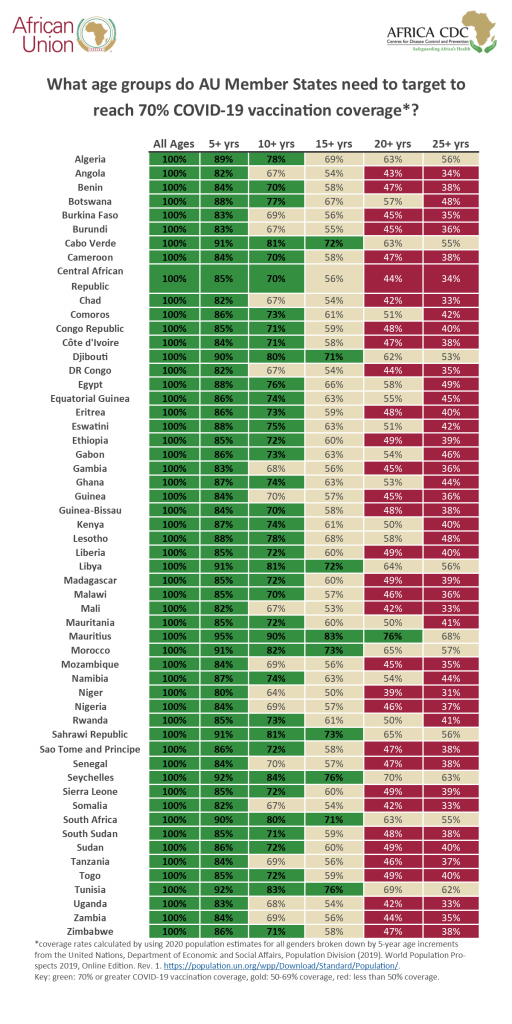This series of infographics was created to inform COVID-19 vaccination policy and provide programmatic guidance to African Union (AU) Member States to enhance vaccine roll out and vaccination campaigns in Africa.
As part of the “Strategy to Achieve Global Covid-19 Vaccination by mid-2022”, a global goal of 70% COVID-19 vaccination coverage has been set by the WHO and Africa CDC, to be achieved in collaboratively through COVAX, African Vaccine Acquisition Trust and other partners.
On a continental level it has been unclear what age groups will need to be enrolled in order for AU Member States and the continent to achieve this global vaccination target of 70%. Given that the average population on the African continent is younger than other global regions, the average population vaccinated to achieve this 70% coverage rate will be younger as well.
Some AU Member States, such as Morocco, Seychelles, and South Africa have initiated immunization of adolescents as vaccines have been approved for emergency use in these age groups either by stringent regulatory agencies (e.g. FDA, EMA) or national regulatory authorities.
To help better understand which age groups should be vaccinated to meet this goal, we looked at 2020 population estimates for each AU Member State broken down by 5-year age increments provided by the United Nations to calculate coverage estimates.
Our initial question/infographic addresses what age group each AU Member State needs to target to reach a 70% COVID-19 vaccination coverage rate. We assumed coverage based on 100% enrollment for each age group, which means that Member States likely need to further expand enrollment to even younger age groups if vaccine hesitancy is seen within the population.
This initial analysis emphasizes the need to extend vaccine eligibility to younger age groups. For most Member States this means targeting populations 10 years and older, and for ⅓ of Member States this needs to even be younger, extending eligibility to 5 years and older according to the estimated population demographics.
